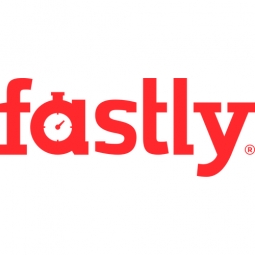Technology Category
- Platform as a Service (PaaS) - Application Development Platforms
- Sensors - Level Sensors
Applicable Industries
- Cement
- National Security & Defense
Applicable Functions
- Logistics & Transportation
Use Cases
- Traffic Monitoring
- Transportation Simulation
Services
- System Integration
- Testing & Certification
About The Customer
Gannett is the largest news publisher in the U.S., with nearly 300 local news brands and a national publication, USA Today. The company reaches more than 150 million users with its Pulitzer-Prize winning content, consumer experiences, and benefits. Gannett prides itself on building an exceptional user experience and is committed to being the first to publish breaking news stories. The company is also dedicated to innovation and is always looking for ways to improve its sites and apps. Gannett was an early adopter of Fastly's edge cloud platform and has used it to build significant efficiencies into its pipeline and secure the end-to-end user experience.
The Challenge
Gannett, the largest news publisher in the U.S., faced a significant challenge in maintaining its competitive edge in the fast-paced world of digital news publishing. The company's previous content delivery solution relied on a time-to-live-based method for purging content, which resulted in a delay of 45 to 90 seconds before a piece of content could go live. This delay was a significant disadvantage in an industry where being the first to publish a story can significantly impact future traffic to a site. Additionally, Gannett's previous solution did not provide the granular control and visibility needed to handle large traffic spikes effectively. The company also faced challenges in deploying configuration changes, which required a minimum of 60 minutes and often involved going through their previous provider. This process was inefficient and limited the ability of Gannett's developers to make changes quickly and independently.
The Solution
Gannett addressed these challenges by switching to Fastly's edge cloud platform. This platform enabled Gannett to push content live in an average of 150 milliseconds, significantly improving its ability to be the first to publish breaking news stories. Fastly's Instant Purge functionality was a key component of this improvement. Gannett also built a custom load-balancing solution using Fastly's edge dictionaries, VCL snippets, and backend health checks, which provided the granular control and visibility needed to handle large traffic spikes effectively. Fastly's platform also enabled Gannett's developers to deploy configuration changes in less than five seconds, a 98.86% improvement over the previous platform. This change empowered Gannett's developers to manage their own configurations and streamline workflows. Additionally, Gannett used Fastly's Image Optimization product to store a single asset at the edge and deliver it to multiple publications in any defined crop, resulting in cost savings and faster user experiences.
Operational Impact
Quantitative Benefit

Case Study missing?
Start adding your own!
Register with your work email and create a new case study profile for your business.
Related Case Studies.

Case Study
System 800xA at Indian Cement Plants
Chettinad Cement recognized that further efficiencies could be achieved in its cement manufacturing process. It looked to investing in comprehensive operational and control technologies to manage and derive productivity and energy efficiency gains from the assets on Line 2, their second plant in India.

Case Study
Data Capture for Afghanistan Forces
Electronic equipments on the field of Afghanistan provided information on the status of the vehicle and to identify potential threats surrounding it to the British Force. The monitoring and interpretation of this data requires robust and sophisticated digitization for data capture and communication.

Case Study
Digital Transformation of Atlanta Grout & Tile: An IoT Case Study
Atlanta Grout & Tile, a Tile, Stone & Grout restoration company based in Woodstock, Georgia, was facing challenges with its traditional business model. Despite steady growth over the years, the company was falling behind the web revolution and missing out on the opportunity to tap into a new consumer base. They were using independent software from different vendors for each of their department information and workforce management. This resulted in a lot of manual work on excel and the need to export/import data between different systems. This not only increased overhead costs but also slowed down their response to clients. The company also had to prepare numerous reports manually and lacked access to customer trends for effective business decision-making.
Case Study
Enhancing Security and Compliance in Remitly's Global Money Transfer Service with Fastly
Remitly, an online remittance service, was faced with the challenge of securing its proprietary global transfer network. The company needed a security solution that could meet PCI requirements and protect customers' sensitive transactions through its mobile application. The solution had to be capable of defending against new and emerging attack types without impacting performance. Remitly also had to deal with irregular traffic patterns, such as a sudden spike in account transfers from a small network segment on the Pacific coastline of South America. The company needed to determine in real time whether such traffic indicated an attack or valid requests. A traditional web application firewall (WAF) would not be able to distinguish this traffic, potentially leading to customer frustration if the IP was blacklisted.

Case Study
Major Aerospace Company Automates Asset Management
The O&M division of an aerospace and global security company was using spreadsheets to manually track more than 3,000 assets assigned to students and staff. Maintaining audit trails for this high volume of equipment became increasingly time-consuming and challenging. The chore involved knowing precisely what equipment was on hand, what had been issued, its location and the name of the custodial owner of each item. Every aspect of this task was carried owner of each item. Every aspect of this task was carried out by individuals with spreadsheets. Manually documenting the full lifecycle of each asset added to the burden. This included tracking maintenance requirements and records, incidents and damages, repairs, calibrations, depreciation, and end-of-life data.








